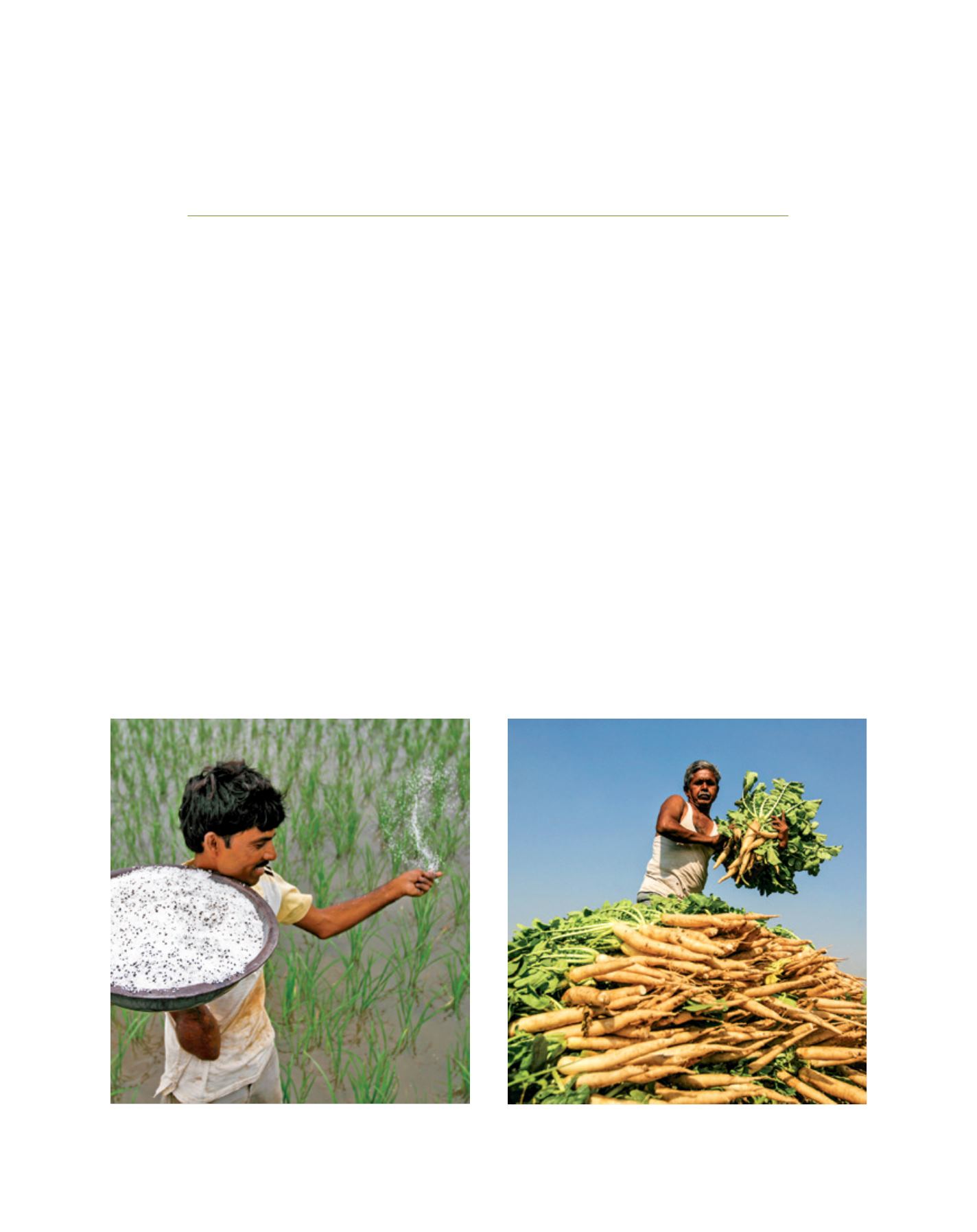

[
] 63
Supporting family farms for food, nutritional
and livelihood security: India’s story
Pravesh Sharma, Managing Director, Small Farmers’ Agribusiness Consortium,
Department of Agriculture and Cooperation, Government of India
I
ndia presents a unique model of a large country,
hosting the second biggest population in the world,
which has achieved self-sufficiency in food produc-
tion entirely on the strength of its family-owned small
farms. Not only has food
1
production climbed from a
paltry 50 million metric tonnes (MTs) in 1950 to over 269
million MTs in 2013, the country was also the world’s top
exporter of rice in that year. This is in addition to large
shipments of wheat, cotton, soymeal, fruits, vegetables,
flowers and spices, besides dairy and meat products. In
fact, India enjoys a comfortable surplus on its agricultural
trade account, a testimony to the competitiveness of the
sector. Along the way, India has also emerged as the top
producer of milk, the second largest producer of fruits
and vegetables, and is among the top three producers of
cotton, wheat and poultry products in the world.
India’s success in leveraging the productive potential of more
than 130 million farm households to voluntarily coordinate with
and support the efforts of the national and local governments in
meeting the challenge of food self-sufficiency is an agricultural
success story with no parallel in the world. Unlike command
economies which operate in a totally different milieu, India’s
success has been achieved against the backdrop of a democratic
polity, private (read family) ownership of farms and concern for
sustainable use of natural resources. The resources, both human
and financial, mobilized for India’s agricultural growth have
been predominantly domestic, which is one of the reasons for
its sustainability over a period of more than six decades.
The centrality of family farms (or smallholder
2
agriculture
as it is called in India) in the strategy to achieve food self-
sufficiency, generate employment and reduce rural poverty
was recognized by India’s planners as they set out to revive an
exhausted agricultural sector emerging from the neglect of over
a century of colonial rule. These planners envisaged the crea-
tion of a comprehensive ecosystem which would address every
challenge of farming from the pre-production to the marketing
stage, thus enabling family farms to make choices based on
Image: Reuters Market Light India (RMLI)
Image: Reuters Market Light India (RMLI)
Family farms are central to India’s strategy to achieve food self-sufficiency,
generate employment and reduce rural poverty
Food production in India has grown significantly since 1950, and the country
was the world’s top rice exporter in 2013
D
eep
R
oots
















